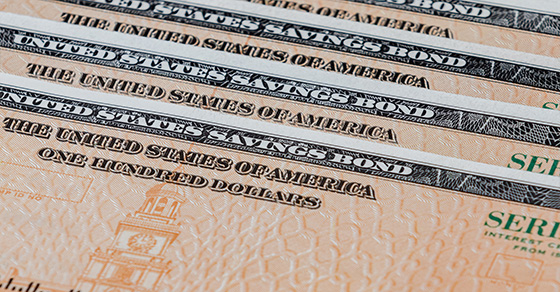In the past, it was a popular investment tool to purchase Series EE bonds. The purpose for their purchase varied between gifts for young children’s future education to a secure way to not lose any basis in your investment.
And now if the bonds have reached final maturity, what do you need to do in order to make sure there is no loss of interest or unexpected tax consequences?

Fixed or variable interest
Series EE Bonds dated May 2005, and after, earn a fixed rate of interest. Bonds purchased between May 1997 and April 30, 2005, earn a variable market-based rate of return.
Paper Series EE bonds were sold at half their face value. For example, if you own a $50 bond, you paid $25 for it. The bond isn’t worth its face value until it matures. (The U.S. Treasury Department no longer issues EE bonds in paper form.) Electronic Series EE Bonds are sold at face value and are worth their full value when available for redemption.
The minimum term of ownership is one year, but a penalty is imposed if the bond is redeemed in the first five years. The bonds earn interest for 30 years.
Interest generally accrues until redemption
Series EE bonds don’t pay interest currently. Instead, the accrued interest is reflected in the redemption value of the bond. The U.S. Treasury issues tables showing the redemption values.
The interest on EE bonds isn’t taxed as it accrues unless the owner elects to have it taxed annually. If an election is made, all previously accrued but untaxed interest is also reported in the election year. In most cases, this election isn’t made so bond holders receive the benefits of tax deferral.
If the election to report the interest annually is made, it will apply to all bonds and for all future years. That is, the election cannot be made on a bond-by-bond or year-by-year basis. However, there’s a procedure under which the election can be canceled.
If the election isn’t made, all of the accrued interest is finally taxed when the bond is redeemed or otherwise disposed of (unless it was exchanged for a Series HH bond). The bond continues to accrue interest even after reaching its face value, but at “final maturity” (after 30 years) interest stops accruing and must be reported.
Note: Interest on EE bonds isn’t subject to state income tax. And using the money for higher education may keep you from paying federal income tax on your interest.
Reaching final maturity
One of the main reasons for buying EE bonds is the fact that interest can build up without having to currently report or pay tax on it. Unfortunately, the law doesn’t allow for this tax-free buildup to continue indefinitely. When the bonds reach final maturity, they stop earning interest.
Series EE bonds issued in January 1990 reached final maturity after 30 years, in January 2020. That means that not only have they stopped earning interest, but all of the accrued and as yet untaxed interest is taxable in 2020.
If you own EE bonds (paper or electronic), check the issue dates on your bonds. If they’re no longer earning interest, you probably want to redeem them and put the money into something more profitable. Contact your Rudler, PSC advisor at 859-331-1717 if you have any questions about savings bond taxation, including Series HH and Series I bonds.
RUDLER'S TAX MANAGEMENT & PLANNING TEAM
This week's Rudler Review is presented by Devin Curren, Staff Accountant and Melanie Smart, CPA.
If you would like to discuss your particular tax situation, contact Devin or Melanie at 859-331-1717.


Rudler PSC has established a Tax Management and Planning Team, a group of professionals who specialize in tax services. These highly qualified and experienced tax specialists meet on a regular basis to discuss upcoming client engagements, current issues relating to our clients and regulatory changes. Be sure to receive future Rudler Reviews for advice from our tax experts, sign up today !